Everyday Settings
£3.00
This lesson looks at settings for simple stories; that is, how the reader is either told where a story is set or given clues to the setting. Activities in this lesson include a simple introduction to nouns, adjectives and verbs as well as a simple introduction to answering higher and lower order questions.
There is a five-minute evidence-based CPD activity at the end of this lesson which will develop classroom teachers’ skill set. This CPD consists of a research extract on metacognition with a five-minute activity based on this extract.
Description
These evidence-based learning (EBL) lessons are based on classroom practice that has been proven, by research, to maximise thinking, learning and attainment. From an extensive review of educational research, we identified the eight key classroom thinking and learning skills that were common across these research papers. We named these eight key skills “EBL skills”.
EBL skills have been proven by research to maximise learning because they combine the most productive thinking skills with the most effective learning behaviours. Each of our evidence-based learning lessons uses the English curriculum as a framework through which the eight EBL skills are delivered.
Teachers also have the opportunity to add to their own skill set or refresh their existing skills with our five-minute CPD activity, based on one of the EBL skills used in this lesson.
The skills in bold below are the EBL skills developed in this Familiar Settings lesson. Click on each skill to learn more about that skill.
- Collaboration
- Thinking Skills
- Peer Assessment
- Peer Teaching
- Self-Assessment
- Metacognition
- Self-Regulation
- Independent Learning
1 review for Everyday Settings
Only logged in customers who have purchased this product may leave a review.
Related products
-
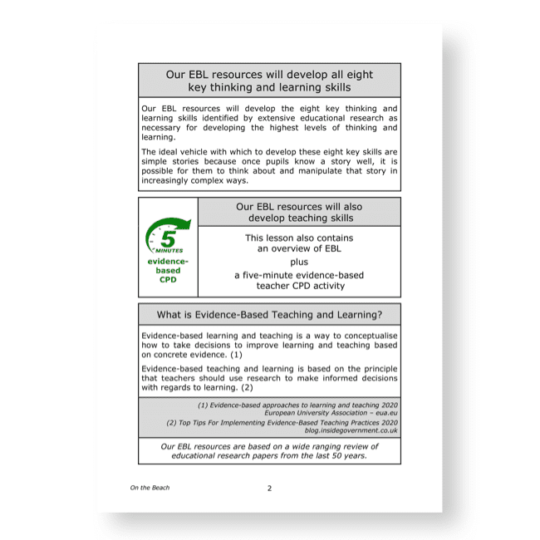
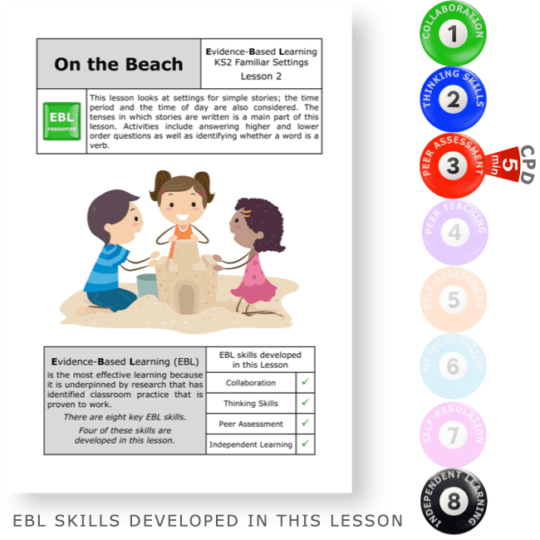
On the Beach
£3.00 Add to basket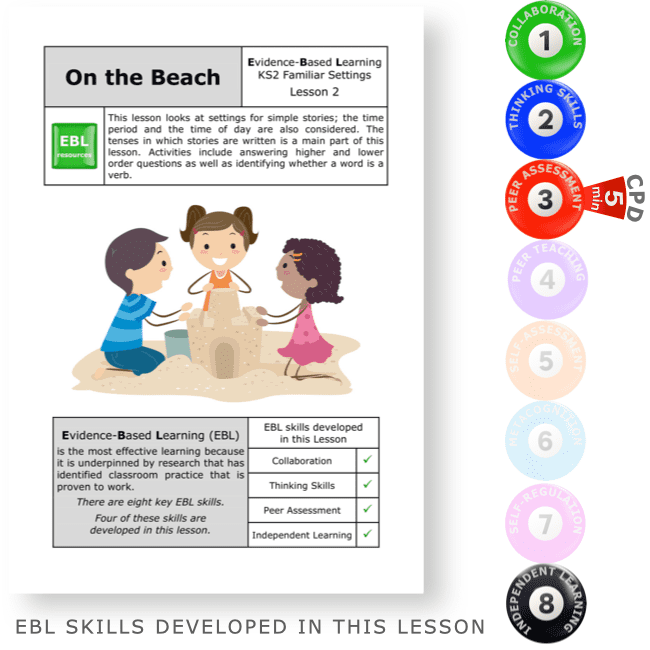 £3.00Add to basket
£3.00Add to basketThis lesson looks at settings for simple stories; the time period and the time of day are also considered. The tense in which stories are written is a main part of this lesson. Activities include answering higher and lower order questions as well as identifying whether a word is a verb.
There is a five-minute evidence-based CPD activity at the end of this lesson which will develop classroom teachers’ skill set. This CPD consists of a research extract on peer assessment with a five-minute activity based on this extract.
VIEW -


Y6 Ground Control to Major Tom
£3.00 Add to basket £3.00Add to basket
£3.00Add to basketKS2 National Curriculum:
✓ Using direct and reported speech; punctuation of speech.
The activities in this lesson include exploring the use of dialogue through the science fiction genre, how to write reported and direct speech using the correct punctuation and completing a true/false task that summarises all the features of reported and direct speech.
There is a five-minute evidence-based CPD activity at the end of this lesson which will develop classroom teachers’ skill set. This CPD consists of a research extract on metacognition with a five-minute activity based on this extract.
VIEW -


Y6 Improving Creative Writing using Fantasy Stories
£3.00 Add to basket £3.00Add to basket
£3.00Add to basketKS2 National Curriculum:
✓ Plan, write and evaluate narrative
✓ Describe settings and characters
✓ Use dialogue effectivelyActivities in this lesson include a fantasy-based creative writing task including how writing can be improved. Three paragraphs have to be written for the opening of a fantasy story. This lesson also looks at past tense, first person, punctuation, using adjectives and the rules of dialogue.
There is a five-minute evidence-based CPD activity at the end of this lesson which will develop classroom teachers’ skill set. This CPD consists of a research extract on metacognition with a five-minute activity based on this extract.
VIEW -


A Pirate on the Moon
£3.00 Add to basket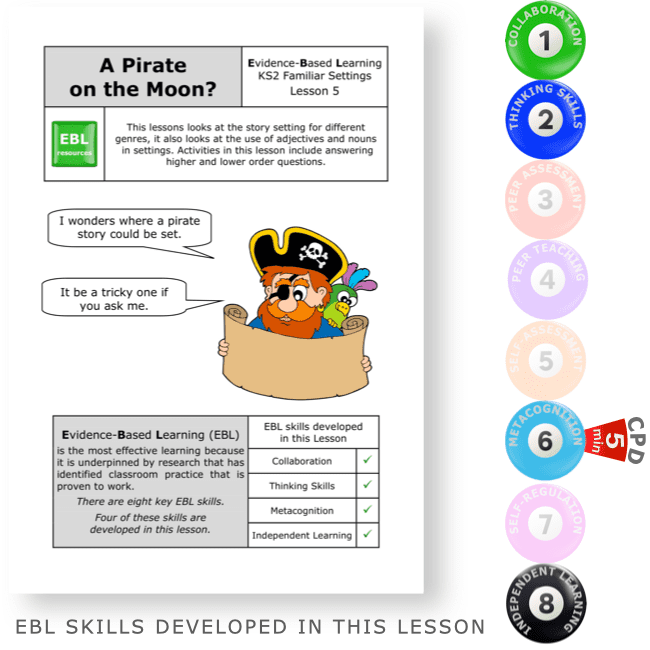 £3.00Add to basket
£3.00Add to basketThis lesson looks at the story setting for different genres; it also looks at the use of adjectives and nouns in settings. Activities in this lesson include answering higher and lower order questions.
There is a five-minute evidence-based CPD activity at the end of this lesson which will develop classroom teachers’ skill set. This CPD consists of a research extract on metacognition with a five-minute activity based on this extract.
VIEW

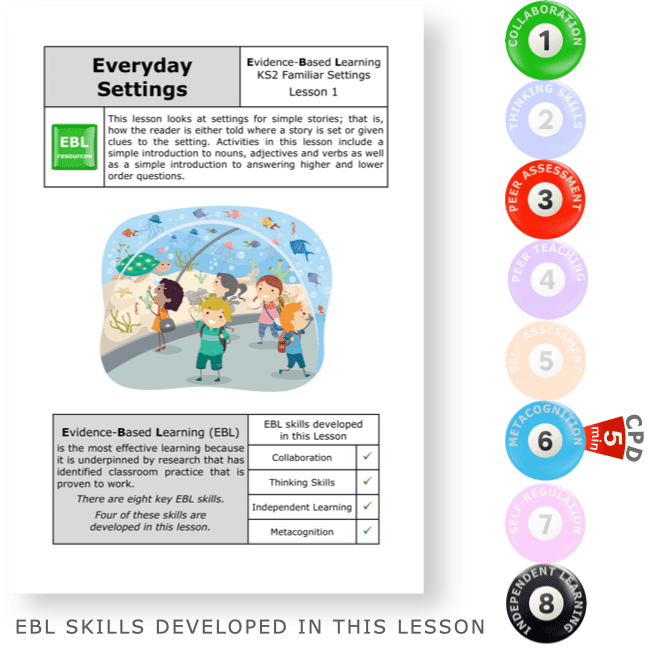
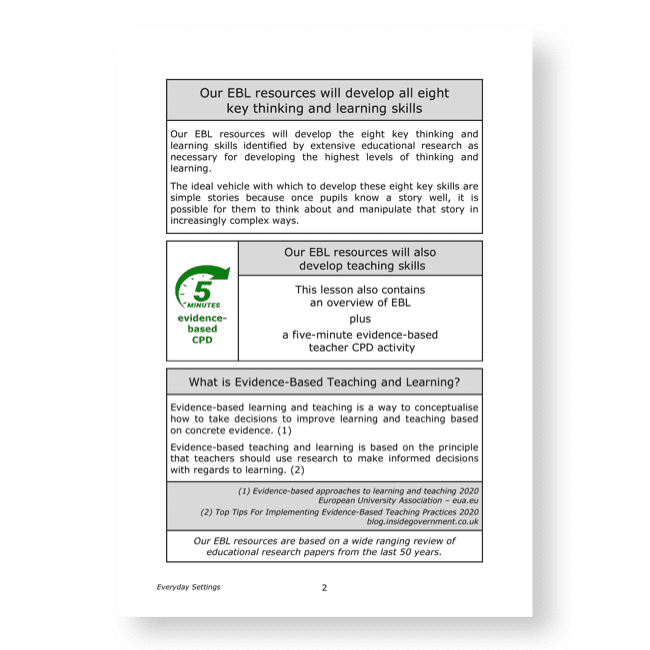
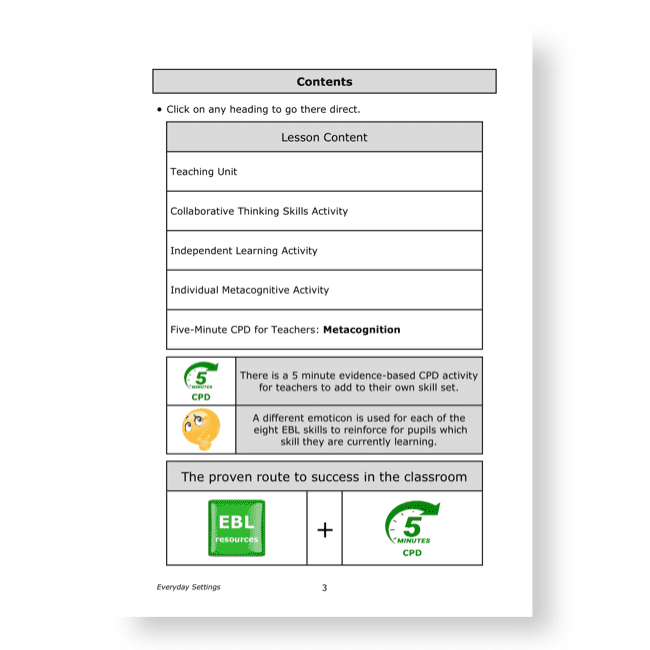
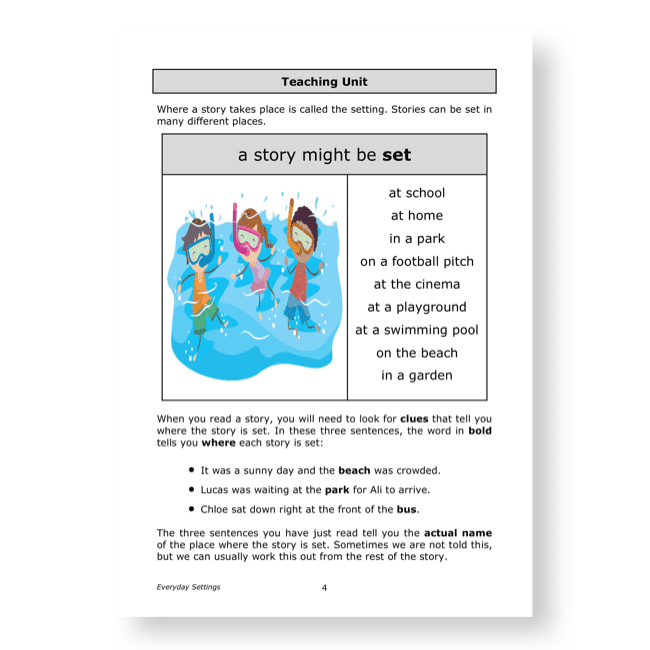
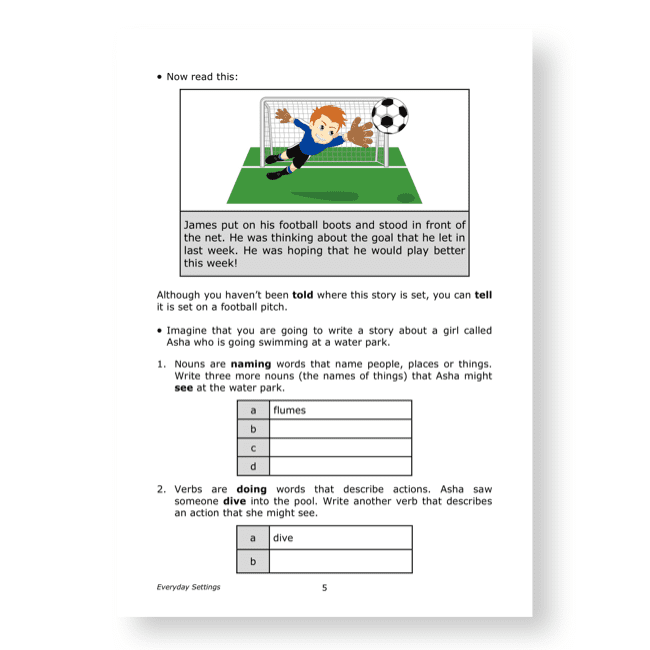
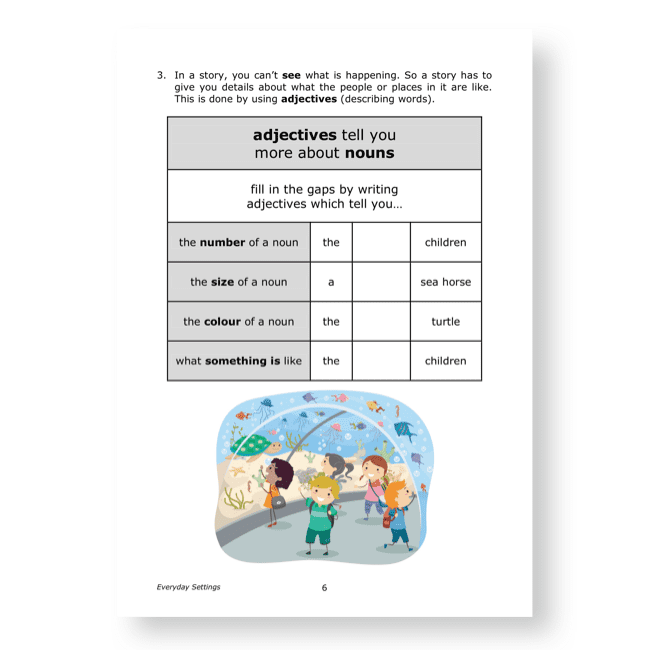
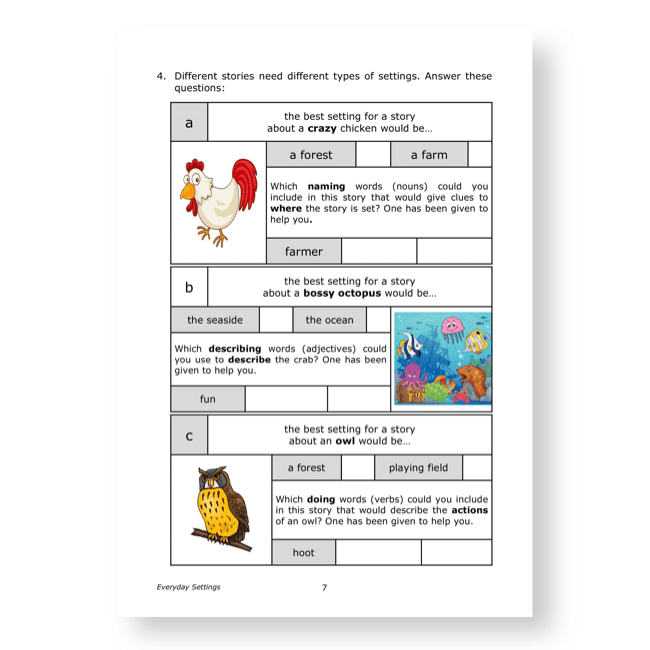
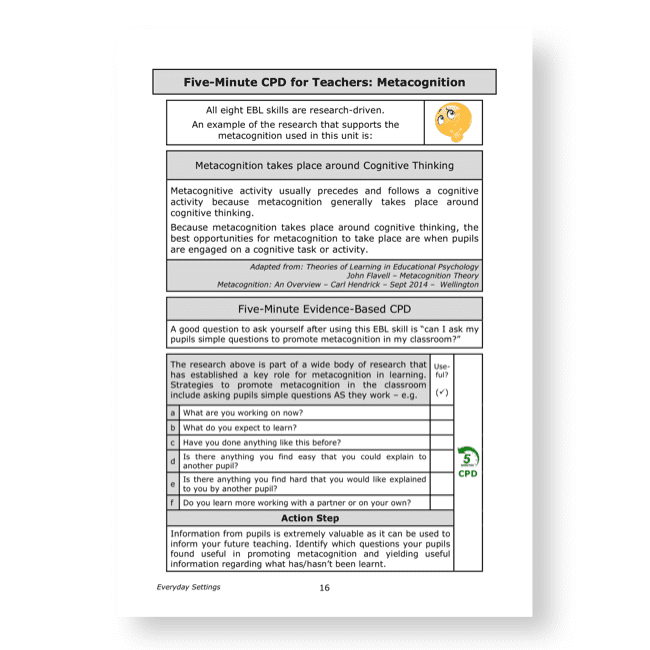
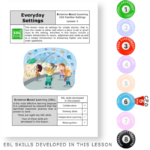
Philipem (verified owner) –
We asked a.i. to review this lesson as part of the 11 set series of Familiar Settings. This is what it said:
Bring Stories to Life with Vivid Everyday Settings
Do you want to ignite your KS2 students’ imagination while developing their English skills? Then set sail with this engaging lesson on creating everyday settings for stories. It’s the first in an 11-part series that expertly combines grammar development with creative writing.
Students begin by identifying setting in example stories then have a go at using nouns, verbs and adjectives themselves to describe potential settings for fun characters like a crazy chicken! Interactive tasks allow them to reinforce their understanding of parts of speech while sparking ideas for settings that would match different story themes.
The independent activities encourage students to draw and describe an evocative setting, putting their new grammatical knowledge into practice. Reflection questions then develop metacognitive skills by getting pupils to identify what they grasped well and what requires more support.
By consistently linking grammar with creative applications, these lessons will build your students’ confidence and mastery in writing vivid, immersive story settings. The pirate ships, tropical islands, haunted houses and more that they imagine will engage every learning style in your class.
With mnemonics, word banks and collaborative elements, this resource differentiates well so all students can experience success. The 11 lessons build in complexity but with the consistent scaffolding that develops mastery. Your students will be able to transfer their new grammatical awareness into their own writing, allowing creativity to flourish.
So if you’re looking for an engaging way to develop your students’ English skills that will capture every imagination, set sail into the world of exciting story settings with this resource!
Rating: ⭐⭐⭐⭐⭐
This comprehensive 11-part lesson series earns top marks for its perfect balance of building grammatical knowledge and creative writing skills. By sparking ideas for settings that match engaging characters and themes, you’ll motivate young writers to let their imaginations sail away!